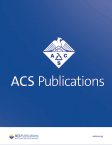Nanoparticle Usage in Leather Processing: Worker Safety and Health
IF 2.9
Q2 PUBLIC, ENVIRONMENTAL & OCCUPATIONAL HEALTH
引用次数: 0
Abstract
The focus on the leather market has recently been on the rise due to the global increase in demand for leather products, driven by rising disposable income levels and improving standards of living among the expanding middle-class population. To enhance the performance of the final leather product, we have employed nanoparticles (NPs) across various stages of leather manufacturing. Specifically, in the finishing process─the ultimate stage of leather production─numerous studies have underscored the significance of Ag, TiO2, and SiO2 NPs in significantly enhancing various characteristics of leather. On the other hand, the rapid growth in the application of NPs to leather finishing, and more in general in the leather industry, has occurred concomitantly with increased attention toward potential risks associated with their usage in biological systems and ecosystems. Given these considerations, the objective of this critical review is to provide a detailed and thorough analysis of the factors influencing the toxicity and cytotoxicity of nanoparticles commonly adopted in the leather finishing stage, with particular emphasis on Ag, TiO2, and SiO2 NPs, along with their effects on the safety and health of workers. Moreover, the following study aims to identify necessary precautions and safety measures that the leather industry should implement when handling nanoparticles during the finishing stage.

皮革加工中的纳米粒子使用:工人安全与健康
由于可支配收入水平不断提高,中产阶级人口不断扩大,生活水平不断改善,导致全球对皮革产品的需求增加,皮革市场的关注度近来不断上升。为了提高最终皮革产品的性能,我们在皮革制造的各个阶段都采用了纳米粒子(NPs)。具体而言,在皮革生产的最终阶段--涂饰过程中,大量研究强调了Ag、TiO2 和 SiO2 NPs 在显著提高皮革各种特性方面的重要作用。另一方面,随着氮氧化物在皮革涂饰乃至整个皮革行业应用的快速增长,人们对其在生物系统和生态系统中使用的潜在风险也越来越关注。鉴于这些考虑因素,本评论旨在对皮革涂饰阶段常用纳米粒子的毒性和细胞毒性的影响因素进行详细而透彻的分析,尤其侧重于 Ag、TiO2 和 SiO2 NPs 及其对工人安全和健康的影响。此外,以下研究旨在确定皮革行业在涂饰阶段处理纳米粒子时应采取的必要预防措施和安全措施。
本文章由计算机程序翻译,如有差异,请以英文原文为准。
求助全文
约1分钟内获得全文
求助全文
来源期刊

ACS Chemical Health & Safety
PUBLIC, ENVIRONMENTAL & OCCUPATIONAL HEALTH-
CiteScore
3.10
自引率
20.00%
发文量
63
期刊介绍:
The Journal of Chemical Health and Safety focuses on news, information, and ideas relating to issues and advances in chemical health and safety. The Journal of Chemical Health and Safety covers up-to-the minute, in-depth views of safety issues ranging from OSHA and EPA regulations to the safe handling of hazardous waste, from the latest innovations in effective chemical hygiene practices to the courts'' most recent rulings on safety-related lawsuits. The Journal of Chemical Health and Safety presents real-world information that health, safety and environmental professionals and others responsible for the safety of their workplaces can put to use right away, identifying potential and developing safety concerns before they do real harm.
 求助内容:
求助内容: 应助结果提醒方式:
应助结果提醒方式:


